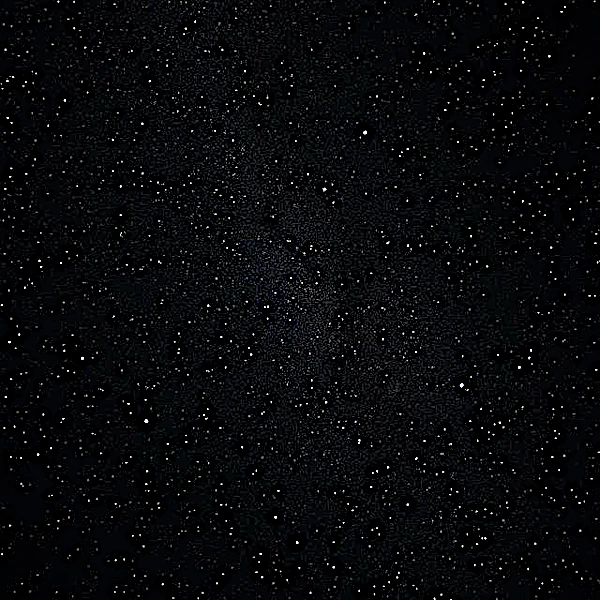
The magnitude of the question does not allow for a simple answer, if there is one, because the question concerns both the philosophical and chemical aspects of life.
We observe that life evolves over time, taking a path defined by an infinite number of parameters, making it undefinable and unpredictable.
However, there is a biological definition of life: "An organism is said to be alive when it exchanges matter and energy with its environment while maintaining its autonomy, when it reproduces and evolves through natural selection."
All living organisms maintain their stability by reacting to changes in their environment. Life, therefore, has the ability to adapt and learn.
However, we also observe that matter is capable of self-organizing without being alive, as seen in galaxies, stars, and planets.
A good definition of life must take this concept into account, that is, the ability of matter to gradually increase in complexity.
A study funded by NASA indicates that the intense asteroid bombardment that occurred nearly 4 billion years ago was not enough to completely sterilize Earth.
The study focused on an event known as the Late Heavy Bombardment (LHB). This event occurred approximately 3.9 billion years ago and lasted from 20 to 200 million years.
The results of their study show that while the bombardments could have generated enough heat to sterilize Earth's surface, microbial life sheltered underground would have survived.
Michael H. New, an astrobiologist, stated: "These results are important because they indicate that if life began before the LHB, before 4 billion years ago, it would have survived in refuges and then spread to fill our world."
Life develops in places where even the sun's energy does not penetrate, as we observe in the abysses of our planet.
Is the tenacity of life not proof that it is present everywhere in the Universe, patiently waiting for favorable conditions to continue its journey towards complexity?
It is hard to believe that life exists only on Earth. Wherever there is liquid water, there is a possibility of life, even under the icy crust of certain planets or planetary satellites.

Since 1995, astronomers have been searching for exoplanets and have discovered several hundred, with more being found every day. The chances of discovering life elsewhere grow daily...
Physical conditions are the same everywhere in the Universe: galaxies contain stars, stars have gaseous or terrestrial planets, and planets are made up of an infinite number of chemical elements such as hydrogen, carbon, water...
In the Milky Way, there are 100 to 300 billion stars, which means a considerable number of planets. Even if the conditions necessary for the emergence of life are difficult to meet, the number of existing planets allows us to think that it is probable that life has developed or is developing elsewhere.
Advances in astronomy will show us that the sites and conditions favorable to life are universal and that the chemistry of carbon, the origin of life, is found everywhere in the Universe.
We have no formal proof of this other life today, but I think there must be many places where life thrives, from the primary state to the advanced state like "ours" and surely beyond.
Currently, our imagination is limited by our egocentric view of the world, which makes us believe that humanity is the unique and extraordinary product of intelligence, but the time given to evolution is infinite.
Life needs time to reach complexity and is the result of pressure to adapt to the environment.
This pressure means that living cells are what they are at any given moment, that is, the result of billions of different phenomena due to chance (meteorite impacts, planetary cataclysms, supervolcano explosions, atmospheric changes, the presence of the Moon,...) that modify the path of evolution towards complexity.
These phenomena are true contingencies whose chronology is almost impossible to reproduce. In this sense, we are unique. This leads some astronomers to say that life on Earth is unique, and that is likely.
The incredible diversity of life forms on Earth is the result of events so improbable that we can confidently affirm the unique character of life on our planet.
While it is certain that life is unique in appearance and that we will not discover other "humans" elsewhere, life itself seems to be a force present in the Universe, like gravitation, electromagnetism, the strong nuclear force, and the weak nuclear force.

The small window opens onto the dimension of atoms and molecules. Astronomers have identified the same atoms throughout the universe as those we know here.
There is no atom present in space that is not present on Earth, and vice versa. Similarly, spatial molecules - some of which have significant structures, up to 115 atoms - are not different from terrestrial molecules.
The laws of atomic physics are the same everywhere. Nature structures itself in the same way, whether in the most distant quasars or on this carpet.
The large window, on the other hand, opens onto the dimension of galaxies and stars, that is, the visible Universe. All these stars resemble each other.
While they are not identical, their structures and evolution are generally the same. Here again, nature organizes itself in the same way, from our Milky Way to the first visible galaxies.
Then there is the intermediate window, that is, ours, that of living organisms. This is a dimension that we cannot see today outside of Earth.
But if nature structures itself in the same way in the small and large windows, it is plausible that it also structures itself in the same way in the intermediate window.
Moreover, it would be surprising if nature, having structured itself in the same way at all scales, had left a void in the middle...
Those who do not believe in extraterrestrial life often cite Fermi's paradox. In 1950, the Italian physicist Enrico Fermi asked the following question:
"If there are living beings everywhere, and therefore civilizations that have reached levels of technology superior to ours, how is it that these extraterrestrials have not come to Earth?"